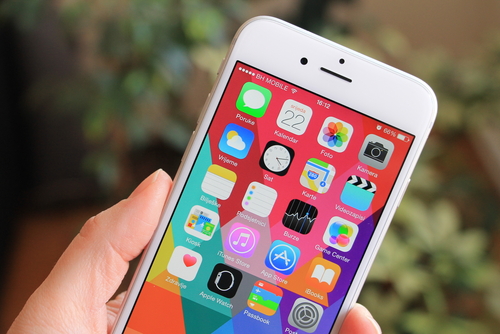Calling 911? Apple’s iPhone can tell a first responder where you are
Can an iPhone save your life or the life of a loved one in an emergency?
Eight of ten 911 calls are made from mobile phones, but much of the public safety emergency infrastructure that’s in place dates back to the landline era of the 1960s.
On Monday, Apple announced that coinciding with the arrival of iOS 12 in the fall, people who call 911 using an iPhone, would be able to automatically and securely share their location with first responders. And that promises to reduce the time for the victim of an accident, crime, fire, or health emergency to get help, potentially saving more lives.
In 2015, Apple launched an initiative called HELO (Hybridized Emergency Location), which estimates a mobile 911 caller’s location by using cell towers and on-device data sources like GPS and Wi-Fi.
Now Apple is teaming up with a New York City company called RapidSOS, builders of a data pipeline that can rapidly whisk HELO information captured on the phone to 911 call centers around the country.
Location info from a 911 call made on an iPhone with iOS 12 will be delivered via this supplemental path by default.
More than 240 million 911 calls are made each year, handled in the U.S. by around 6000 call centers managing 25,000 different software systems. The RapidSOS pipeline is based on standard Internet industry protocols to communicate with these disparate systems.
In a statement accompanying Apple’s Monday announcement, which was made during the NENA The 9-1-1 Association industry conference in Nashville, Apple CEO Tim Cook says, “Communities rely on 911 centers in an emergency, and we believe they should have the best available technology at their disposal. When every moment counts, these tools will help first responders reach our customers when they most need assistance.”
In an interview, former FCC Chairman Tom Wheeler, who invested in RapidSOS and become one of the company’s advisors, says “This is the equivalent of moving from an analog flip phone to a digital smartphone.” Wheeler says the way location is shared, is similar to the way Uber can deliver a taxi to your front door.
In fact, Uber recently partnered with RapidSOS on 911 location-sharing.
TJ Kennedy, the co-founder of The Public Safety Network and former president of FirstNet, is another investor and RapidSOS public safety advisor. “Many of us do not know exactly on a roadway where we are to describe it to 911 and if we are not in a familiar town or location this is even harder. The faster public safety can arrive on an emergency call the sooner they can take life saving action like using a defibrillator to help someone having a heart attack or to transport a patient to the nearest trauma center for life saving interventions.”
Apple claims the data collected during the call is kept private and cannot be used for any non-emergency purpose. Only the responding 911 Center will be able to access the user’s location during an emergency call.
“I’ve always thought, and put rules in place at the FCC to do this, is that the first privacy test is it has to be `opt-in,’ Wheeler says. “When I call 911 I am saying, ‘please, find me.’ That’s about as opt-in as you can get.”
The FCC requires carriers to locate callers to within 50 meters at least 80 percent of the time by 2021. Apple says iOS location services are capable of exceeding this requirement today, even in challenging dense-urban environments.

